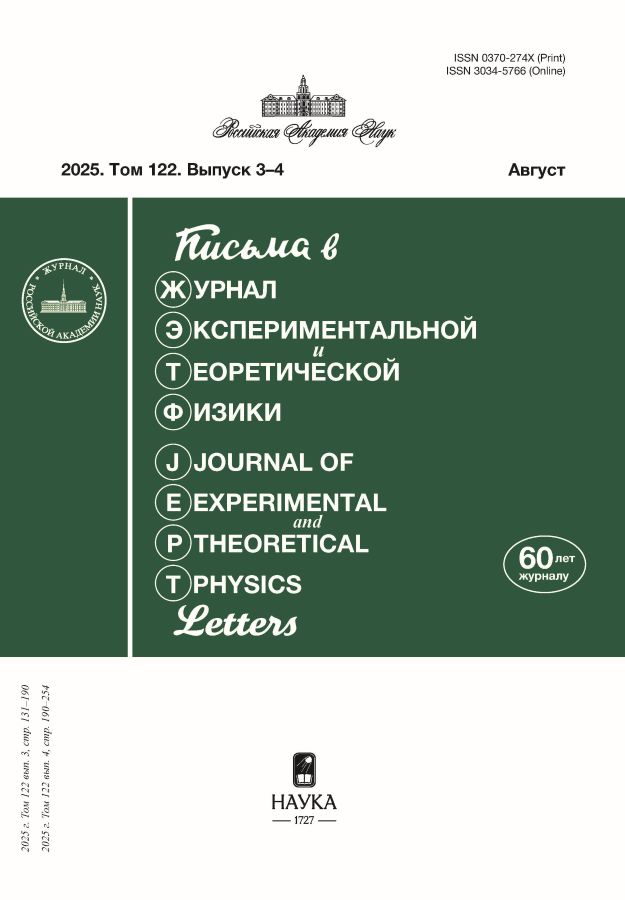Острая фокусировка атомного пучка с использованием доплеровского и суб-доплеровского механизмов лазерного охлаждения в двумерной магнито-оптической ловушке
- Авторы: Быкова Д.В.1,2, Афанасьев А.Е.1, Балыкин В.И.1
-
Учреждения:
- Институт спектроскопии РАН
- Национальный исследовательский университет “Высшая школа экономики”
- Выпуск: Том 118, № 1-2 (7) (2023)
- Страницы: 7-13
- Раздел: Статьи
- URL: https://vestnik.nvsu.ru/0370-274X/article/view/663087
- DOI: https://doi.org/10.31857/S1234567823130037
- EDN: https://elibrary.ru/FZJDGK
- ID: 663087
Цитировать
Полный текст
Аннотация
В работе рассмотрена фокусировка атомного пучка с использованием двумерной магнито-оптической ловушки с целью увеличения количества атомов в области их лазерного охлаждения и локализации вблизи атомного чипа. Рассмотрены два режима взаимодействия атомов с фокусирующим лазерным полем: (1) доплеровский режим взаимодействия, который реализуется при малых отстройках лазерного поля от частоты атомного резонанса и (2) суб-доплеровский режим взаимодействия, который реализуется при больших отстройках лазерного излучения от частоты атомного резонанса. В первом случае в силу диффузии импульса эффективность фокусировки низкая. Показано, что при использовании суб-доплеровского механизма охлаждения диффузия импульса несущественна и, как следствие, увеличение ширины скоростного распределения атомов по поперечным скоростям незначительно. В таком режиме взаимодействия возможна острая фокусировка атомного пучка.
Об авторах
Д. В. Быкова
Институт спектроскопии РАН;Национальный исследовательский университет “Высшая школа экономики”
Email: afanasiev@isan.troitsk.ru
Троицк, Москва, 108840 Россия;Москва, 101000 Россия
А. Е. Афанасьев
Институт спектроскопии РАН
Email: afanasiev@isan.troitsk.ru
Троицк, Москва, 108840 Россия
В. И. Балыкин
Институт спектроскопии РАН
Автор, ответственный за переписку.
Email: afanasiev@isan.troitsk.ru
Троицк, Москва, 108840 Россия
Список литературы
- S. Wildermuth, P. Kr¨uger, C. Becker, M. Brajdic, S. Haupt, A. Kasper, R. Folman, and J. Schmiedmayer, Phys. Rev. A 69, 030901 (2004).
- V. Singh, V.B. Tiwari, K.A.P. Singh, and S.R. Mishra, J. Mod. Opt. 65(21), 2332 (2018).
- A.E. Afanasiev, D.V. Bykova, P. I. Skakunenko, and V. I. Balykin, JETP Lett. 115, 509 (2022).
- A.E. Afanasiev, A. S. Kalmykov, R.V. Kirtaev, A.A. Kortel, P. I. Skakunenko, D.V. Negrov, and V. I. Balykin, Opt. Laser Technol. 148, 107698 (2022).
- V. I. Balykin, JETP Lett. 66, 349 (1997).
- Z.T. Lu, K. L. Corwin, M. J. Renn, M.H. Anderson, E.A. Cornell, and C.E. Wieman, Phys. Rev. Lett. 77(16), 3331 (1996).
- P.N. Melentiev, P.A. Borisov, S.N. Rudnev, A.E. Afanasiev, and V. I. Balykin, JETP Lett. 83(1), 14 (2006).
- A.M. Steane, M. Chowdhury, and C. J. Foot, J. Opt. Soc. Am. B 9(12), 2142 (1992).
- S. Chang, T.Y. Kwon, H. S. Lee, and V.G. Minogin, Phys. Rev. A 60, 3148 (1999).
- C. Salomon, J. Dalibard,W.D. Phillips, A. Clairon, and S. Guellati, EPL 12, 683 (1990).
- S.A. Hopkins, PhD thesis, The Open University, Milton Keynes, England (1996).
- V. S. Letokhov and V.G. Minogin, Phys. Rep. 73, 1 (1981).
- S. Chang and V.G. Minogin, Phys. Rep. 365, 65 (2002).
- J.W. Jun, S. Chang, T.Y. Kwon, H. S. Lee, and V.G. Minogin, Phys. Rev. A 60, 3960 (1999).
Дополнительные файлы











